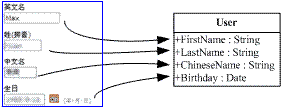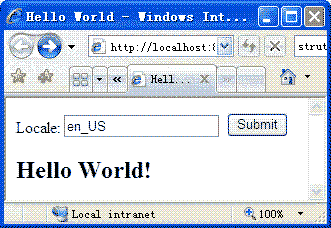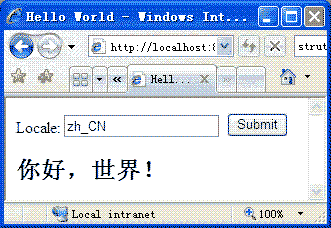- 浏览: 173772 次
- 性别:

- 来自: 北京
-

最新评论
-
一棵杨柳的地盘:
为Struts 2.0做好准备(Struts 2.0系列之一) -
van007008:
谢谢提供的方法
去掉ArrayList里面的重复元素 -
zhuzhiguosnail:
very good.
window.location.href和window.location.replace的区别 -
godismycompany:
https://dwr.dev.java.net/files/ ...
Struts 2与AJAX(第三部分)(Struts 2系列之十五) -
爪哇岛岛主:
很显然,你这个SQL语句是错误的,我随便看了第一句,应该这样写 ...
三种高效率SQL语句分页方法(2)--转自CSDN中WUCF2004的博客










 }
} }
}




相关推荐
Struts 2的魔术师——转换器,使得数据绑定变得更加灵活和强大,它能处理各种类型的数据转换工作,确保数据的正确性并提供异常处理机制。 首先,我们来理解一下转换器(Converter)的基本概念。转换器是Struts 2...
05 转换器(Converter)——Struts 2.0中的魔术师 06 在Struts 2.0中实现表单数据校验(Validation) 07 Struts 2的基石——拦截器(Interceptor) 08 在Struts 2中实现IoC 09 在Struts 2中实现文件上传 10 在Struts...
转换器(Converter)——Struts 2.0中的魔术师 在Struts 2.0中实现表单数据校验(Validation) Struts 2的基石——拦截器(Interceptor) 在Struts 2中实现IoC 在Struts 2中实现文件上传 在Struts 2中实现CRUD ...
05 转换器(Converter)——Struts 2.0中的魔术师 06 在Struts 2.0中实现表单数据校验(Validation) 07 Struts 2的基石——拦截器(Interceptor) 08 在Struts 2中实现IoC 09 在Struts 2中实现文件上传 10 在Struts...
05 转换器(Converter)——Struts 2.0中的魔术师 06 在Struts 2.0中实现表单数据校验(Validation) 07 Struts 2的基石——拦截器(Interceptor) 08 在Struts 2中实现IoC 09 在Struts 2中实现文件上传 10 在Struts...
1.为Struts 2.0做好准备 2.常用的Struts 2.0的标志(Tag)介绍 3.Struts 2.0的Action讲解 ...5.转换器(Converter)——Struts 2.0中的魔术师 在6.Struts 2.0中实现表单数据校验(Validation) 7....... 8.......
"转换器(Converter)——Struts 2_0中的魔术师" 可能解释了Converter的角色,它负责将HTTP请求参数转换为Action类中的属性,或者将Action的属性转换为适合视图展示的格式。 5. **标签(Tag)使用**: "常用的...
转换器是Struts2框架中的“魔术师”,因为它可以魔术般地将用户界面提交的不同格式的数据转换为Action类期望的类型。默认情况下,Struts2提供了一些基本类型的转换器,如字符串到整数、浮点数等。但当遇到自定义类型...
- 转换器是Struts2中的魔术师,它允许开发者自定义类型转换,将HTTP请求中的参数转换为Action类属性的合适类型。当模型对象的属性类型与请求参数不匹配时,Converter发挥作用,保证数据绑定的正确性。 3. **CRUD...